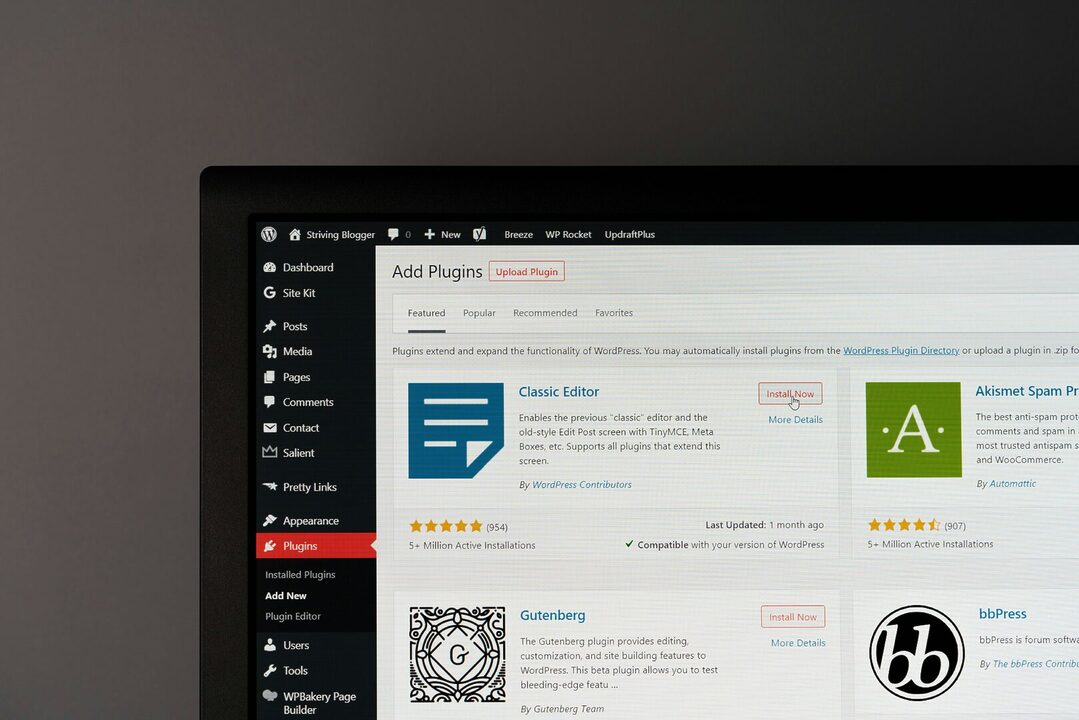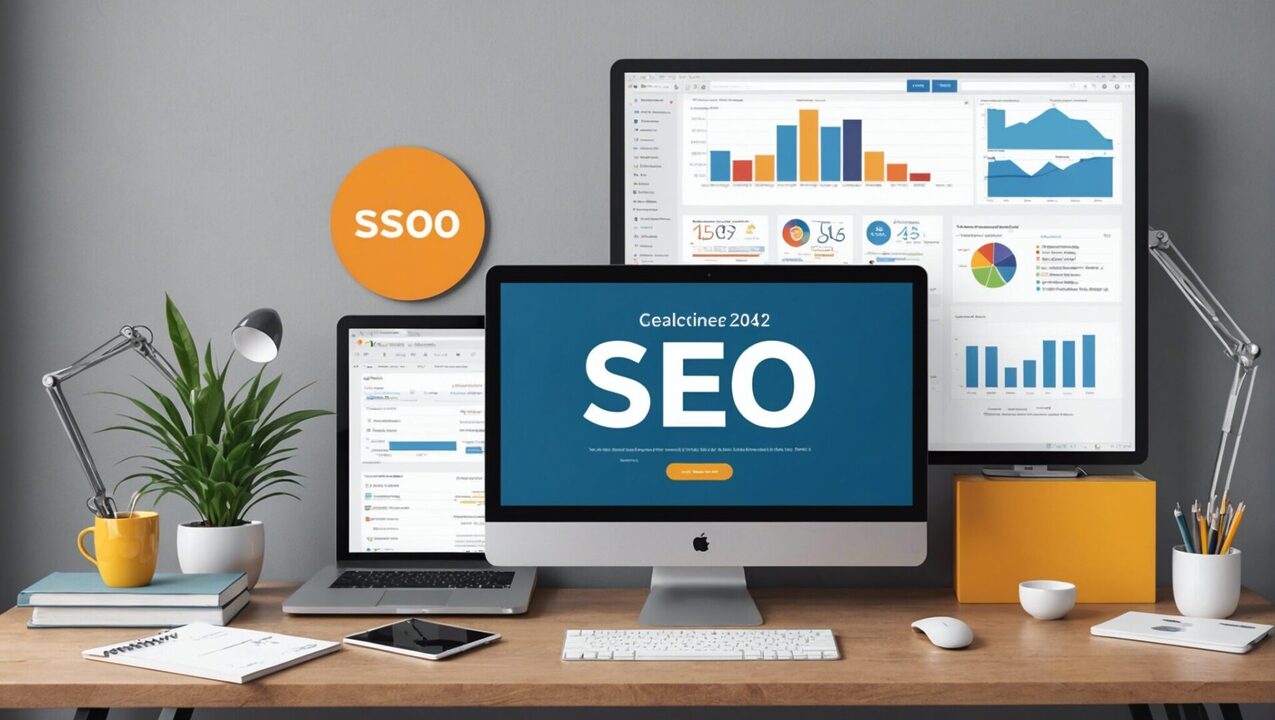| IN SHORT |
| 🔒 The security of a WordPress site is essential to protect your data and that of your users. In this article, we will explore practical strategies and tips to effectively secure your WordPress site against online threats. |
| 🔍 Potential threats to WordPress |
| 🔍 Hacking, security breaches, missing updates and weak passwords are common threats to your WordPress site. |
| 🛡️ Type of threats: brute force attacks, plugin and theme vulnerabilities, SQL injections, malware. |
| 👨💼 Possible consequences: data compromise, site hijacking, impact on reputation. |
| 🔒 Recommended means of protection: use a security plugin, SSL certificate, regular updates, strong passwords, backups, two-factor authentication. |
| 🔐 Correct configuration of permissions, use of security plugins, continuous monitoring, real-time alerts. |
| ✅ Preventive actions: frequent updates, automatic backups, strong passwords, firewalls, security audits. |

The security of a WordPress site is essential to protect your data and that of your users. In this article, we will explore practical strategies and tips to effectively secure your WordPress site against online threats.
Potential threats to WordPress
The WordPress ecosystem, although robust, is not immune to certain potential threats. These threats can compromise the security of your data and the integrity of your site.
Piracy is one of the most common threats. Hackers use a variety of tactics to gain access to your site, including SQL injection, brute force attacks, and cross-site scripting (XSS).
THE security failures within the plugins and themes represent another major risk. Even popular plugins can contain vulnerabilities that attackers can exploit to manipulate your site or steal sensitive information.
THE missing updates are also a weak point. Failing to regularly update WordPress, as well as plugins and themes, exposes your site to known vulnerabilities.
Finally, the weak passwords constitute a notable security vulnerability. Using strong, unique passwords for all administrative accounts is crucial.
To protect your WordPress site, it is essential to follow certain safety practices recognized. This includes using a trusted security plugin, configuring firewalls, and enabling two-factor authentication. Furthermore, back up your site regularly to avoid any loss of data in the event of an attack.
Type of threats
WordPress site owners should be aware of the potential threats to which their platforms are exposed. Understanding these dangers is essential to better prepare and implement adequate safety measures.
The security of a WordPress site is a crucial issue. Various threats can compromise the integrity and performance of your website. Here’s an overview of the types of threats you face.
Brute force attacks are common and involve trying multiple password combinations until you find the right one. The use of a security plugin like Anti-Malware Security and Brute-Force Firewall helps prevent this type of attack.
Plugin and theme vulnerabilities are also a frequent target. Using plugins and themes from trusted sources and updating them regularly is essential to avoid security breaches.
SQL injections represent another major threat. They can allow an attacker to bypass security measures and access sensitive data in your database.
Malware can infect your site, causing malfunctions or loss of data. A good security tool will be used to monitor and remove any malicious threats.
- Brute force attacks
- Plugin and theme vulnerabilities
- SQL injections
- Malware
Investing in WordPress security best practices is crucial to protecting your site. Check out this source of informative articles to deepen your knowledge and stay up to date on best practices for securing WordPress sites.
Possible consequences
WordPress, due to its popularity, attracts many online threats. THE hackers often target WordPress sites to exploit vulnerabilities. Among them, we find attacks of the type brute force, SQL injection, cross-site scripting (XSS), and malware.
The consequences of a successful attack can be multiple. First of all, your data sensitive information can be compromised, including your users’ information. Then your site could be diverted to send spam or host illegal content. Finally, the notoriety of your site could be seriously affected, leading to a loss of trust among your users and an impact on your revenue.
To minimize risks, it is crucial to adopt robust security measures. Considering the security trends current, you are able to effectively protect your WordPress site against emerging threats.
Remember, security is an ongoing process, not a single task. By remaining vigilant and regularly updating your site and its components, you contribute to its long-term protection.
Common attack methods
WordPress, due to its popularity, is a frequent target for attacks online. The diversity of themes and plugins can represent a risk if they are not properly secured. Using an insecure theme can expose your site to critical vulnerabilities, putting your data and that of your users at risk.
Attacks can take many forms. Here are some of the most common:
- Brute force attacks : The pirates try to guess the login credentials by trying multiple password combinations.
- SQL injections : Attackers exploit vulnerabilities in the code to manipulate your database and access sensitive information.
- Cross-Site Scripting (XSS) : This method allows attackers to inject malicious scripts into web pages visible to end users.
It is crucial to put security measures in place such as using a firewall, limiting login attempts, and selecting reliable themes and plugins. For example, a vulnerable WordPress theme can wreak havoc on your site and expose your data to critical flaws.
To strengthen the security of your site, it is also relevant to use security tools such as vulnerability scanners, security plugins and to ensure that administrator access is secured with two-factor authentications.
| 🔒 | Use strong passwords |
| 🔥 | Set up a firewall |
| 🔄 | Perform regular backups |
| 🔐 | Install an SSL certificate |
| 🚫 | Avoid insecure plugins |
🔒 Tips for effectively securing your WordPress site:
- Use strong, unique passwords for each account 🔑
- Regularly update WordPress, themes and plugins 🔄
- Install an SSL certificate to encrypt the data exchanged 🔐
- Limit login attempts with a security plugin 🔒
- Perform regular backups of your site and database 💾
Recommended means of protection
To secure your WordPress site, start by installing a security plugin effective such as Wordfence or Sucuri. These tools offer advanced features such as firewall, security checks, and real-time threat protection.
Make sure your site uses a SSL certificate. This certificate makes it possible to secure data exchanges between the server and visitors, thus reducing the risk of information theft.
Perform regular updates of your theme, plugins and WordPress version to fix known vulnerabilities. Updates are essential to avoid common attacks exploited by hackers.
Use a strong, unique password for your administrator account. A good password should contain at least 12 characters, including uppercase letters, lowercase letters, numbers and special characters. Also consider limiting login attempts by installing a plugin like Login LockDown.
Set up backups regular visits to your site. Backups allow you to quickly restore your site in the event of a problem. You can automate this task with plugins like UpdraftPlus or BackupBuddy.
Activate thetwo-factor authentication (2FA) to add an extra layer of security. This method asks users to provide a second element of identification, such as a code sent by SMS or generated by an authenticator application.
Avoid defaulting to the “admin” username. This makes it more difficult for attackers to try to gain access to your site via brute force.
Reduce the risks of Ransomware is also crucial. Follow the available recommendations here for maximum protection.
For the protection of minors and to avoid inappropriate content, refer to the resources available on youth protection.
Regular updates
For protect your WordPress site against online threats, start by performing regular updates of the CMS, themes and plugins. The updates fix the vulnerabilities potential and improve functionality.
Use secure passwords and change them regularly. Implement two-factor authentication (2FA) to strengthen the security of your administrative accounts.
Secure access to your administration interface by limiting connection attempts. Install a security plugin to restrict access after multiple failed attempts.
Perform frequent backups of your site. Use solutions like automated backup plugins to ensure rapid recovery in case something goes wrong.
Adopt SSL certificate implementation practices to encrypt data exchanged between the server and visitors, thus protecting sensitive information.
Monitor your site regularly for suspicious activity. Use monitoring tools and plugins to quickly spot intrusions and act accordingly.
Comply with legal recommendations on data protection by following the guidelines communicated by organizations such as the CNIL.
To further strengthen your site, consult outside resources on site management practices. Individual protection and the latest security technologies.
Using security plugins
Securing a WordPress site involves several crucial steps. Among the recommended practices, the use of security plugins is strongly recommended to minimize risks.
Installing security plugins is essential. These tools help protect data, install firewalls and detect suspicious activities:
- Wordfence : Provides protection against brute force attacks and includes a malware scanner.
- iThemes Security : Locks the dashboard and provides file modification detection.
- Sucuri Security : Provides continuous file monitoring and blacklisting of malicious IP addresses.
In addition to security plugins, reinforce Passwords is essential. Opt for complex passwords and use password managers to make them easier to manage. Also consult the safety tips when using connected devices.
Regularly updating WordPress, themes and plugins is another essential measure. This allows you to correct known security vulnerabilities and benefit from the latest protections. See the preventative measures for more details.
Correct configuration of permissions
It is crucial to adopt a good configuration of permissions to secure your WordPress site. Files must have correct permissions to limit unauthorized access. Generally, files should have permissions of 644 and folders of 755.
Using secure passwords is another essential measure. Consult the new recommendations of the CNIL regarding Passwords to control your safety.
A security plugin reliable must be installed. Solutions like Wordfence or Sucuri offer robust protection against common attacks.
Make sure to regularly update your WordPress site and all themes and plugins to fix issues. vulnerabilities potential.
Activate a web application firewall (WAF). This solution prevents common attacks like SQL injections or cross-site scripting (XSS).
Use a two-factor authentication (2FA) to add an extra layer of security. This will make it much more difficult for attackers to access your site.
Regularly backing up your site is essential. Use solutions like UpdraftPlus or BackupBuddy to create and store backup copies.
For added protection, configure your site security at the server level. For example, restrict access to sensitive files and change the database prefix.
Site Backup and Restore
There backup and the restoration of your WordPress site are crucial to guarantee its security and sustainability. Start by performing regular backups of your site to avoid any data loss in the event of a cyberattack or technical problem.
To automate this process, use reliable plugins like UpdraftPlus or Duplicator. These tools offer automatic and manual backup options, and allow you to store your data on external platforms such as Google Drive, Dropbox or even on your own server.
Once you have set up your backups, be sure to regularly test the restoration of your site. Testing the restore allows you to verify that your backups are intact and working properly. In the event of a problem, you will be able to react quickly and put your site back online without losing valuable data.
Backup solutions also include scheduling differential or incremental backups. These methods save storage space while ensuring continued protection of your data.
It’s also important to encrypt your backups to add an extra layer of protection. Encryption protects your saved data from unauthorized access. Additionally, keep multiple backup copies in different locations for maximum redundancy.
Investing in a high-performance backup solution is essential, especially in the face of current threats like ransomware. Read how on the site ransomware impact safeguarding and the challenges to overcome to be fully prepared.
By following these tips, you can significantly strengthen the security of your WordPress site and rest assured that your data is always protected and recoverable.
The importance of backups
There backup Regular maintenance of your WordPress site is an essential step to guarantee the security of your data. Without a backup, you risk losing crucial information in the event of an attack or outage.
It is recommended to adopt the rule of backup 3-2-1, which involves keeping three copies of your data: two local backups on different media and one external copy. This strategy allows for rapid recovery when needed.
There restoration of a WordPress site should be just as simple as backing up. Choose a backup solution that offers one-click recovery to minimize downtime. Plugins like UpdraftPlus or BackupBuddy are ideal for managing these processes in an automated way.
Automatic backup solutions
There backup Regular maintenance of your WordPress site is essential to avoid any loss of data in the event of hacking or technical failure. Performing backups allows you to quickly restore your site to its normal state in the event of a problem.
THE automatic backup solutions are numerous and vary according to needs. Among the most popular are plugins like UpdraftPlus, BackWPup and VaultPress. These tools allow you to schedule automatic backups, choose the elements to back up (database, files, etc.) and store your backup copies on different media (remote server, cloud, FTP, etc.).
- UpdraftPlus: Easy to use, with backup options to Google Drive, Dropbox, and more.
- BackWPup: Offers advanced features and external server storage options.
- VaultPress: Integrated with Jetpack, provides a complete backup and security solution.
Among business solutions, it is crucial to refer to the latest trends in the market. THE final magic quadrant for enterprise backup and recovery solutions provides valuable insights into best practices and innovative tools. Thus, adapting your choices according to the recommendations of this type of sources guarantees maximum security for your site.
Finally, for a restoration efficient, make sure your backup solution allows you to easily reinstall your site. A simplified recovery process minimizes your site downtime and reduces the risk of data loss. Projects like the restoration of the Castellas de Roquemartine clearly illustrate the importance of good organization and appropriate tools for the success of such operations.
Recovery procedure in the event of an incident
To safeguard your WordPress site is essential to prevent any data loss. A backup Regular ensures that you can revert to an earlier version of your site if something goes wrong. Use backup plugins like UpdraftPlus or BackupBuddy to automate this task.
Performing a backup involves keeping copies of your WordPress files as well as your database. This can be done locally on your hard drive or via a cloud storage service.
Backing up your site regularly helps protect against security breaches and human errors. For example, when restoring the security of a site, having a recent backup makes it easier to resume activities.
There restoration of your WordPress site after an incident must be done quickly to minimize interruptions. Here are the steps to follow:
- Identify the latest available backup.
- Download or access this backup.
- Use a restore plugin to recover files and database.
- Verify that all site features are operational after restoration.
To simplify restoration, some plugins offer a one-click function. Many include step-by-step guides, such as when data restoration, guaranteeing better management of the situation.
Continuous security monitoring
There security of your WordPress site is an ongoing process that requires effective monitoring and regular. The establishment of a system of helps quickly detect suspicious activities and prevent the most common threats. Use monitoring tools like vulnerability scanners to regularly inspect your site.
Set up automatic updates for your WordPress site, your themes and your plugins is essential. Outdated versions may contain exploitable security vulnerabilities. Enable notifications to be alerted when an update is available to maintain the integrity of your site.
Another important aspect is the use of firewall and intrusion prevention systems (IPS). These tools analyze incoming traffic and filter suspicious requests before they reach your server. Add an extra layer of security like a also helps protect your data and builds user trust.
To ensure a continuous monitoring safety, it is recommended to follow practices such as:
- Implement two-factor authentication (2FA) for all administrator accounts.
- Perform regular backups of your site to allow you to quickly restore your data in the event of a problem.
- Monitor access logs for intrusion attempts or other suspicious activity.
Taking these steps will help you maintain a high level of security for your WordPress site and protect your data against online threats.
Monitoring tools
There security of a WordPress site is essential to protect your data and that of your users. Continuous monitoring ensures rapid detection of threats and implementation of countermeasures. Various tools allow you to set up this monitoring, guaranteeing the stability and reliability of your site.
A monitoring constant allows you to quickly identify vulnerabilities and prevent attacks. It includes monitoring file changes, detecting malware, and checking for unauthorized login attempts.
To implement effective monitoring, several tools can be used:
- Security plugins : Plugins such as Wordfence or Sucuri offer comprehensive monitoring, including malware detection and web application firewalls.
- Online Security Services : Some specialized services offer regular security scans and detailed reports. They can also perform continuous monitoring of your site. For example, the security sector offers integrated monitoring systems.
- Monitoring systems : Tools like Uptime Robot monitor your site’s uptime in real time, alerting you immediately if there are any issues.
Incorporating these tools into your security strategy improves the protection of your WordPress site. Constant monitoring ensures you stay ahead of cyber threats.
Real-time alerts
There security of your WordPress site is a priority. To guarantee optimal protection, it is crucial to put in place a continuous safety monitoring.
The use of specialized plugins is strongly recommended. These tools allow you to regularly scan your site for potential vulnerabilities. Solutions like Wordfence, Sucuri or iThemes Security are among the most popular and effective.
Monitoring your site should be a daily task. It is therefore strategic to program automatic analyzes and regular. This ensures rapid detection of any issues before they become critical.
THE real-time alerts are essential for reactive protection. These notifications inform you immediately if a threat is detected. This allows you to take quick action to prevent intrusion or damage.
Here are some of the main benefits of real-time alerts:
- Immediate notification of suspicious connection attempts.
- Information about unauthorized changes to system files.
- Instant reporting of detected vulnerabilities.
Additionally, it is essential to stay informed about current cyber threat trends. For example, recent studies show that the equipment market video surveillance is experiencing significant growth, highlighting the importance of continuous monitoring.
Finally, include a security tool like Microsoft Defender can add an extra layer of protection on various devices connected to your site.
Preventive actions to put in place
There continuous monitoring of your WordPress site is essential for identifying potential threats in real time. Use specialized monitoring tools to detect any suspicious behavior.
Investing in systems video surveillance can also strengthen the physical security of your servers.
To protect your WordPress site, here are some preventive actions to apply:
- Regularly update the WordPress core, THE themes and the extensions.
- Install plugins backup automatic to ensure data recovery in the event of an attack.
- Use passwords strong and enable two-factor authentication.
- Configure a firewall to block suspicious IP addresses.
- Carry out regular audits of the security of your site to identify and fix vulnerabilities.
To increase protection, consider installing surveillance cameras solar panels to prevent physical attacks on your infrastructure.
A: WordPress site security risks include brute force attacks, SQL injections, user account hijacks, etc.
A: It is essential to regularly update WordPress core and all installed plugins to keep your site secure.
A: Recommended plugins to strengthen the security of your WordPress site include Wordfence Security, Sucuri Security, iThemes Security, etc.
A: A strong password should be at least 8 characters long, include upper and lower case letters, numbers and special characters.
A: You can limit login attempts by using a security plugin that provides this functionality, or by changing the security settings in your site’s .htaccess file.



